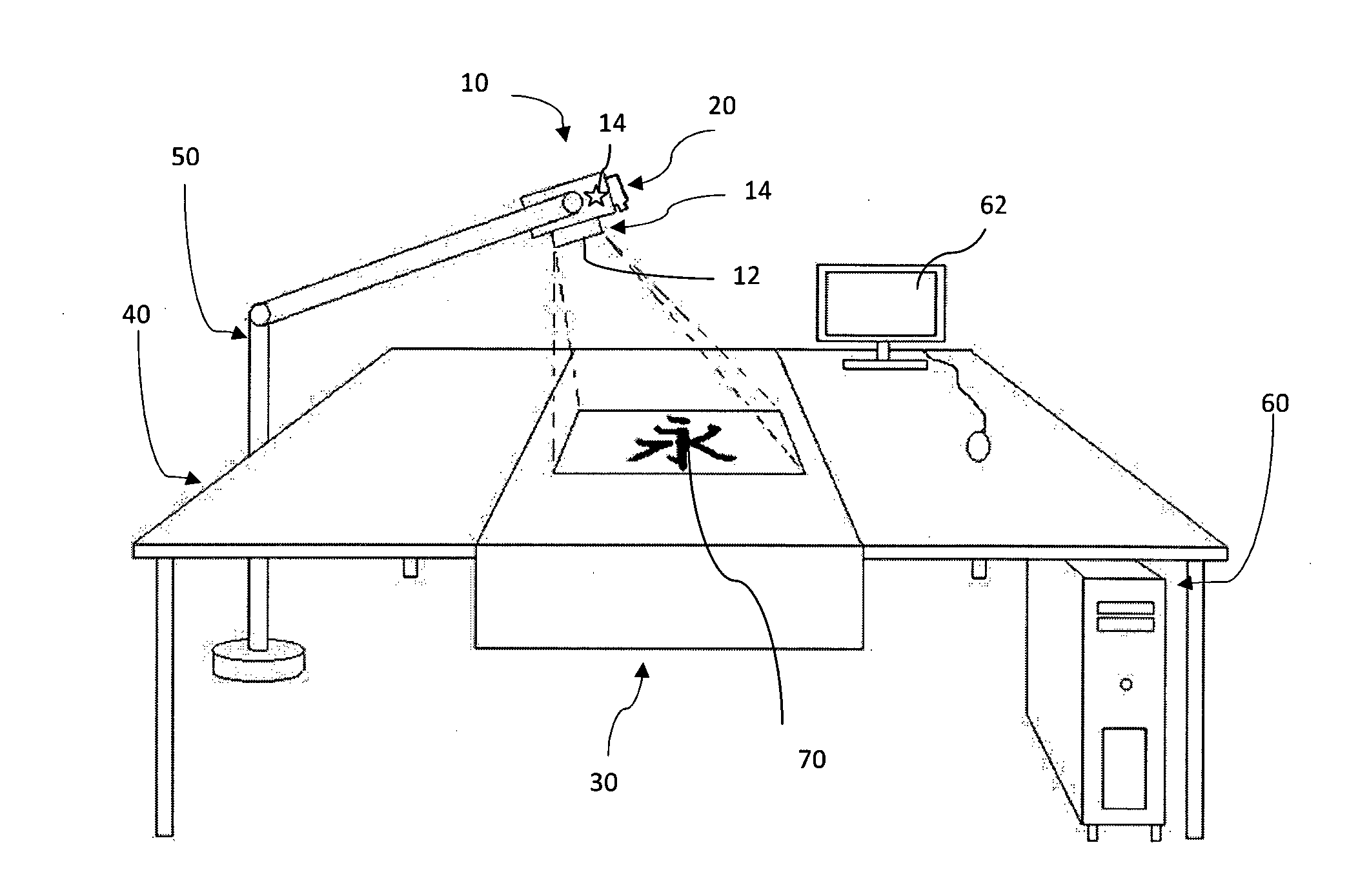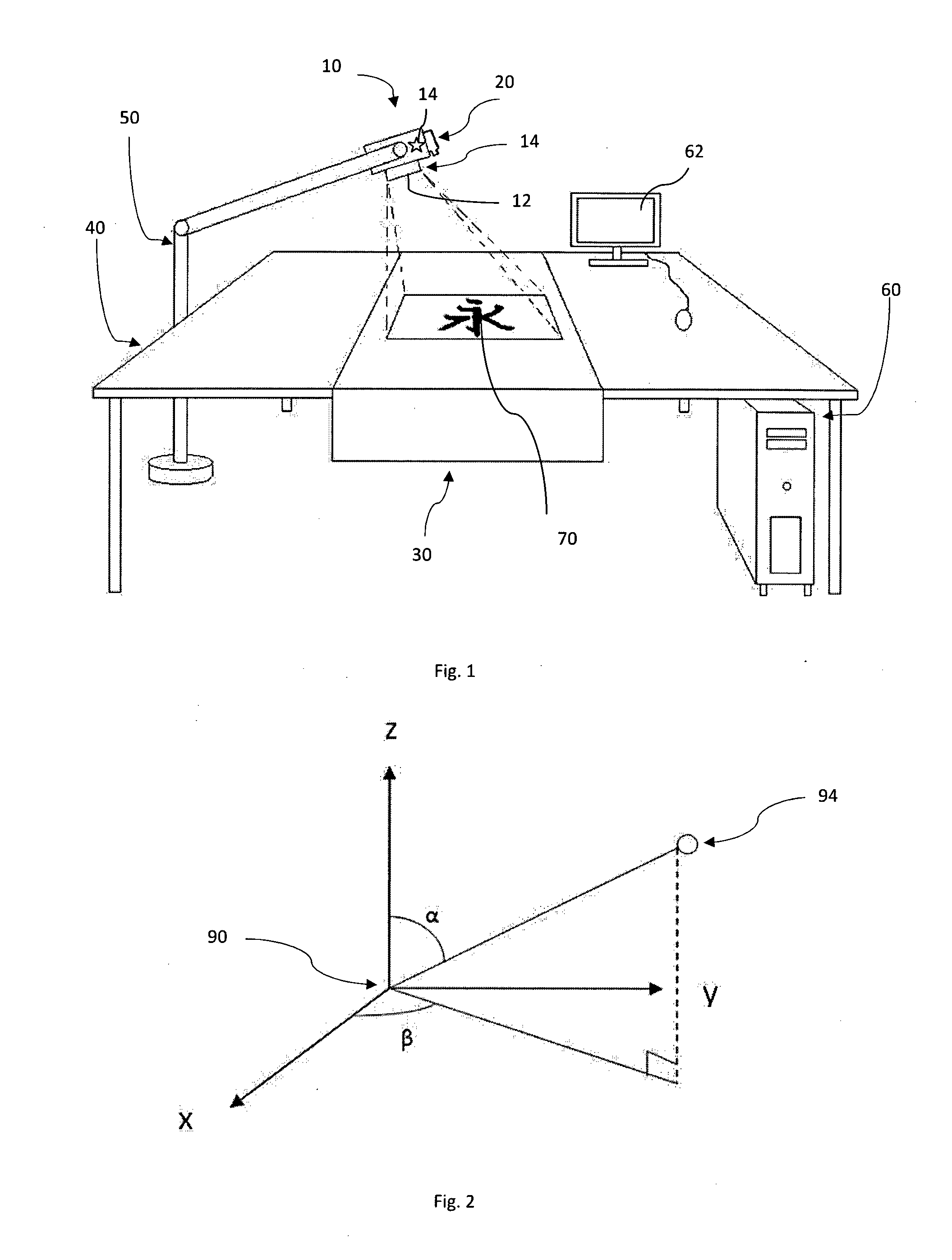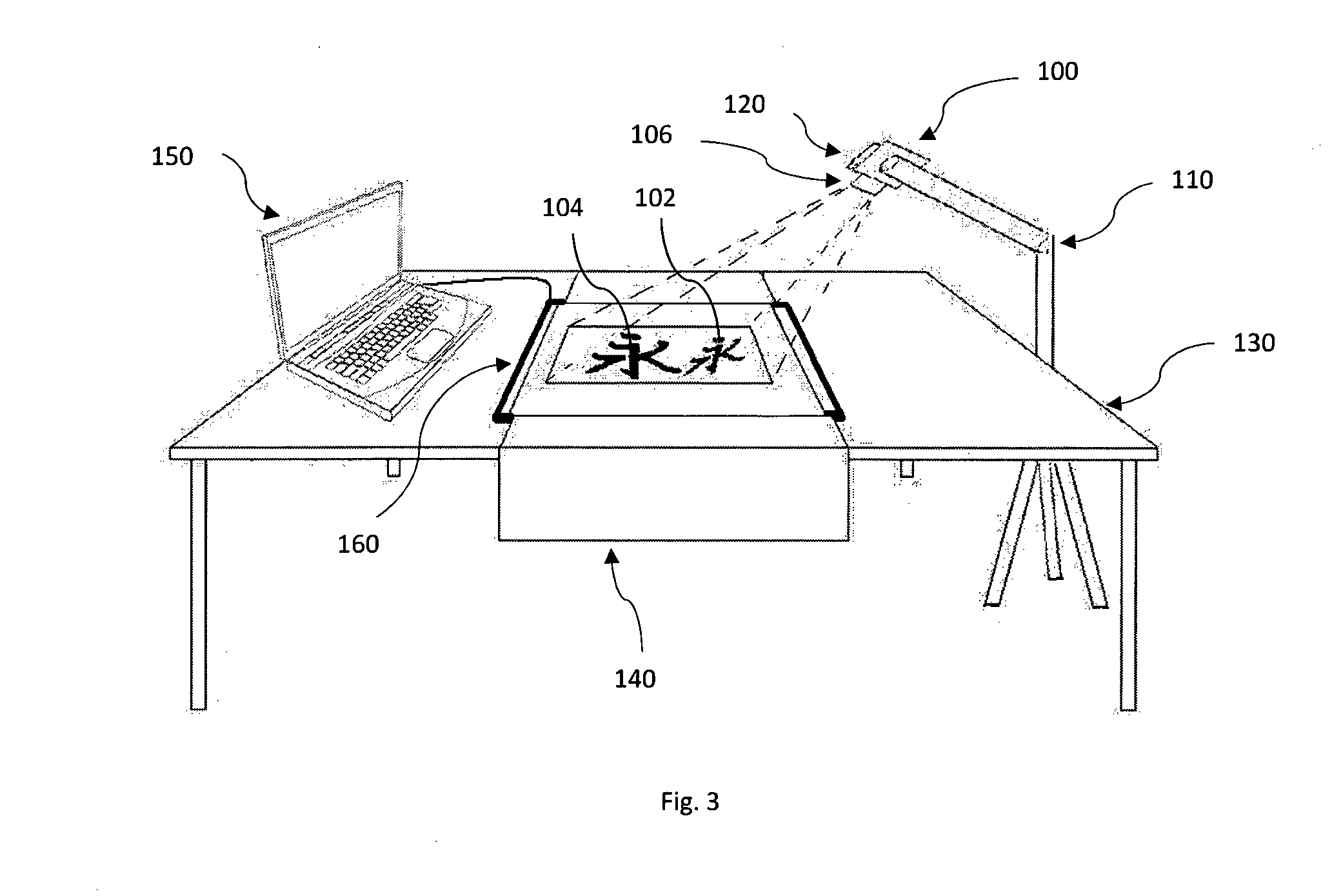Nevertheless, some problems exist with the lin and mo process.
To lin, i.e. place the model piece of artwork on one side, is extremely difficult for a beginning artist because he or she has to judge, by
naked eye, the sizes and relative positions of the various
brush strokes.
But, gridlines have limitations.
First, the gridlines cannot show or teach the sequence to produce an image.
Without knowledge of the proper sequence, learning to write certain images is extremely difficult.
Another limitation is caused by the nature of commonly used gridlines.
Unless the gridlines are in close proximity to one another, the gridlines are not helpful.
However, for beginning students who have not yet mastered the lin process, a plain square is an insufficient learning tool for at least two reasons.
Yet, it is difficult to ascertain the size and relative position of each
brush stroke of the Chinese character.
Second, this first issue is complicated by the fact that the student also must simultaneously attempt to write the character within the square's center.
Unfortunately, using gridline subdivisions is a clumsy process.
Yet, that would damage the book.
Moreover, the way learning books often display images further complicates the gridline
subdivision process.
In both of these instances, beginners find it difficult to distinguish the gridlines from the paper, even when the gridlines are white.
Even with the help of exercise books, the student may still encounter problems.
First, exercise books provide only a limited number of grids.
Second, the scale of the image in the book may not be suitable for the student's practice, that is, the student may wish to
train by writing bigger or smaller characters than those provided in the book.
Third, often book's image is unclear and / or unauthentic because it was a product of multiple reproductions of an original image.
Fourth, many images typically are not reproduced directly in exercise book form.
Finally, exercise books are often printed using ordinary paper unsuitable for calligraphy.
But, machines cannot easily print and bind rice papers into exercise books because of its physical properties.
However, these remedies are time-consuming and cannot completely extinguish the problems associated with physical gridlines.
Moreover, they also create new issues.
Drawing gridlines on both the photocopied image and on rice paper often takes longer than the calligraphy practice itself.
Rice papers with gridlines pre-printed are inflexible—the size and type of grids cannot be changed unless one buys another set of grid-lined rice papers and draws over the pre-printed lines.
Most importantly, gridlines do not allow the student the satisfaction of a complete piece of artwork.
Yet, it has its own complications.
However, the rice paper's thickness makes it less translucent, thus rendering the original artwork visually unclear.
Using a more translucent paper creates additional issues: such paper is typically less absorbent.
Should the ink bleed through the paper, the mo process may risk damaging the original art work.
But, if the ink bleeds, the photocopy cannot be re-used for further practice.
But, one cannot possibly photocopy a red, gray, or outlined image onto rice paper for his ‘mo’ exercise repeatedly.
One reason is that producing an exact of the original image onto rice paper is a difficult and costly task—one usually handled only by professional printing houses.
Another reason is that rice paper is too soft, and the sizes are usually not standardized (usually much too large) to be placed into the paper tray of a photocopying
machine.
The sequence limitation problem arises from using lin or mo for teaching certain Chinese art.
It is virtually impossible for a new learner to attempt the
cursive script () by using either lin or mo because of this
brush stroke.
This
sequence learning complication also arises in most forms of art or writing that require more than simple strokes.
If the image of the whole passage is printed on one page of common-size book, then it may be too small to be studied clearly.
If the image of the whole passage is broken down and printed into separate pages, the student may not be able to see and practice the flow for the entire passage.
Moreover, it would be costly to print multiple copies of the passage on rice paper for repeated mo exercises.
Though these considerations can be taught by an experienced Chinese art teacher, it is important to note that such teachers are often rare and expensive.
Although alternative calligraphy learning options (such as Wikipedia, findyourinnercalligrapher.com, and Calligraphy for Dummies) are available to help individuals understand the style, these options cannot account for the many issues that result from learning common scripts such as seal script (), clerical script (), regular script ( or ) running script (), or
cursive script ().
 Login to View More
Login to View More  Login to View More
Login to View More 


